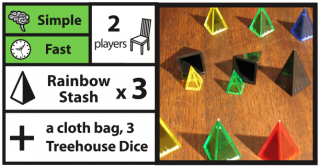
How to Play Black ICE
Designed by Andy Looney
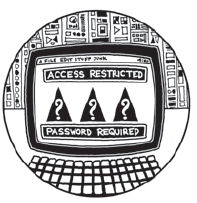 Introduction: You are a computer hacker trying to break into a secure system. To gain access, you need a three-color password. The secret codes are changed frequently, by the system’s ICE (Intrusion Countermeasures Electronics), and if you try using the wrong password, the Black ICE will shut you down. So don’t try to open the locks until you have the right colors programmed in!
Introduction: You are a computer hacker trying to break into a secure system. To gain access, you need a three-color password. The secret codes are changed frequently, by the system’s ICE (Intrusion Countermeasures Electronics), and if you try using the wrong password, the Black ICE will shut you down. So don’t try to open the locks until you have the right colors programmed in!
Number of Players: 2
Equipment: 3 Rainbow Stashes, 3 Treehouse Dice, a cloth bag (which will be called the“Black Box”)
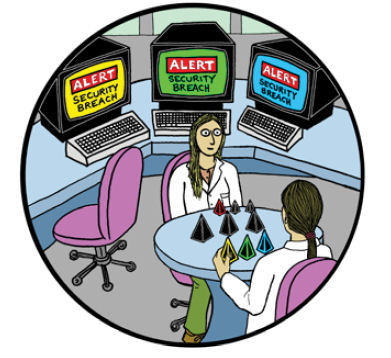
Setup: Place the three Large opaque pieces in a row in the center of the table. Make two more rows of opaque pieces, one row in front of each player, running parallel to the center row. Sort out the other pieces by size.
Put all the Smalls into the Black Box. Give all the Mediums to the player who has the Small opaques, and give all the Larges to the player with the Medium opaques. (Your Keys will completely cover your Nodes).
Hide a random Small pyramid from the Black Box under each of the three Large opaques. Don’t let anyone see the hidden Smalls!
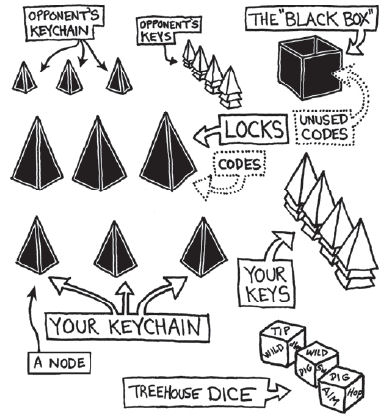
Goal: Match the 3 hidden pyramids with a row of 3 of your own in the same sequence.
To win, you must cover the three nodes in your row of base pyramids (your “Keychain”) with three of your colored pyramids (your “Keys”) which exactly match the colors and sequence of the three Small pyramids (the “Codes”) hidden underneath the three Large pyramids (the “Locks”) in the center of the table.
You also win if your opponent makes a guess and is incorrect.
Turn Options: On your turn, roll three dice, then perform three actions (in any order). Each duplicate turns into a WILD.
Examples:
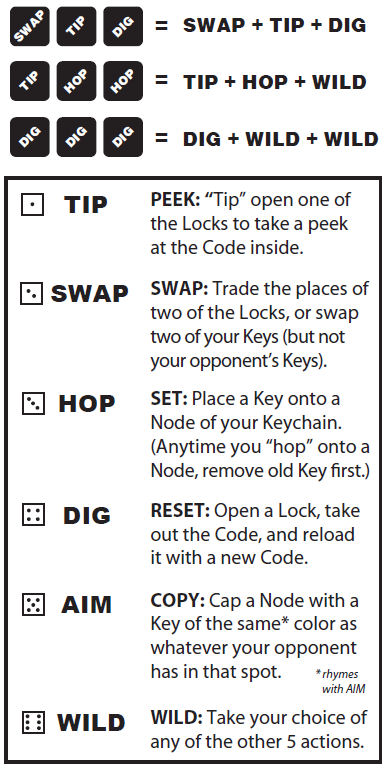
Null = Wild: If one of your actions is rendered meaningless because none of its options actually do anything, you get a Wild action instead. Thus, Copy becomes Wild if your three Nodes already match your opponent’s, and Reset becomes Wild if the Locks are all un-Peeked by your opponent.
Passing: You can also Pass on any action.
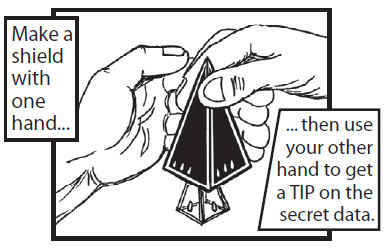
How to Peek: The best way to look inside a Lock is to cup your hand around it, forming a little shield, and then lift the large piece and look underneath.
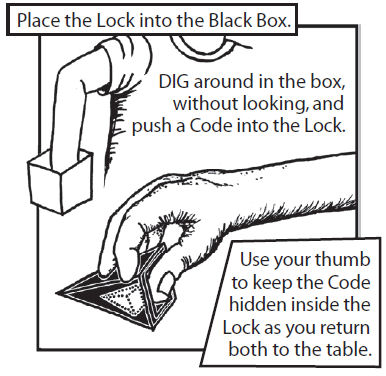
How to Reset: Lift the Lock to reveal the old Code on the table. As you reload the Lock, look the other player in the eye -- that way, you can both be sure neither of you sees the new color being loaded. Lastly, return the old Code to the Box.
Who Starts: Winner of the previous game goes first.
Game Over: The game ends as soon as someone declares it. If it’s your turn, and you think you’ve got the correct Keys in place, declare “I win!” and reveal the Secret Codes. If you were correct, you win! If you were wrong, say “Wait, I’m wrong! You win!” and demand a rematch!


